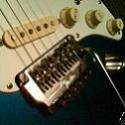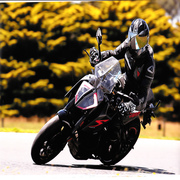|
Factory Factory posted:A $60-ish liquid cooler cools pretty much identically to a Hyper 212 EVO. The Hyper 212 is just... ballin' price/performance. That's great, thanks. I'll probably just end up getting the Hyper 212 as I have less tolerance/time available to find the absolute limit when overlocking these days, but I'll also keep an eye out for a deal on one of the Thermalright/Noctua coolers in case they go on sale before I buy the Hyper 212. Any thoughts on adding a second fan to the 212? I read something about motherboards not responding well to the y-splitter necessary to power two CPU fans and started to think I might not want to have to bother with that.
|
|
|
|

|
| # ? May 9, 2024 12:03 |
|
I added a fixed-speed low-RPM fan to my Hyper 212+ and it's been great. Previously I was right at the edge of safe temperatures and tolerable CPU fan noise, and the extra little bit of airflow has helped quite a lot. Specifically, I used an 800 RPM Scythe fan. I haven't played with two PWM fans, but if the fans on the splitter aren't the exact same I can easily imagine things going crazy. The stock fan is really good, though, and nearly impossible to find not already attached to a CM heatsink. With the cost of getting two identical, good, PWM fans to replace the stock fan, you might as well just get the Macho.
|
|
|
|
A lot of people buying this fan seem to think it's the same fan that comes with the Hyper 212+. And this PWM splitter draws power directly from the power supply, not through the motherboard, so you won't have to worry about power issues. John McCain fucked around with this message at 23:30 on Aug 30, 2012 |
|
|
|
I just reapplied the thermal grease and I am getting 5-10 degree lower temperatures for now. i'll run a 24 hour stress test for 24 hours and see what happens.
|
|
|
|
Dubplate Fire posted:I just reapplied the thermal grease and I am getting 5-10 degree lower temperatures for now. i'll run a 24 hour stress test for 24 hours and see what happens. Highly recommend you do Prime95 for that one, IBT for that long risks damage. You probably already know that, but just a FYI in case.
|
|
|
|
The temperatures went back up to 65 when running prime95 overnight. I'm gonna stop freaking out about this unless anyone has any ideas.
|
|
|
|
To be honest I was a bit perturbed to be seeing temps at 65C under load on my 3570K with a 212+ but after doing some googling that does seem fairly standard for this processor and cooler combo, IB does seem to run quite hot and there are questions about the TIM used under the IHS. I haven't tried overclocking mine yet though, mainly because of those temps. I also can't be arsed to reseat/re-apply TIM because I did that about a million times with my old QX9650 + Tuniq Tower combo and it never made a blind bit of difference.
|
|
|
|
Dubplate Fire posted:The temperatures went back up to 65 when running prime95 overnight. I'm gonna stop freaking out about this unless anyone has any ideas. What program are you using to monitor your temps?
|
|
|
|
I'm using HWiNFO64.
|
|
|
|
You could just have kind of a hot-running chip. We've certainly seen them before in IVB, thanks to the construction of it. You can either not worry about it, or get [H] and use a razor to remove the IHS, reapply a superior thermal paste, re-seat the IHS, re-seat your cooler, and maybe drop 5-7�C if that is the cause.
|
|
|
|
chippy posted:To be honest I was a bit perturbed to be seeing temps at 65C under load on my 3570K with a 212+ but after doing some googling that does seem fairly standard for this processor and cooler combo, IB does seem to run quite hot and there are questions about the TIM used under the IHS. I haven't tried overclocking mine yet though, mainly because of those temps. That sounds a little hot for a stock 3570K with aftermarket cooling, I'm still using the stock cooler and 65C is the hottest my stock speed CPU has gotten after long sessions of BF3 and GW2. I tried going to 4.2GHz on stock cooling but was getting temperatures in the low 70s so I decided to not overclock until I got a better HSF. I was under the impression that the 212 should be noticeably better than stock cooling, lowering temps at stock speeds and making overclocking at 65C possible, so that's a little concerning. Dubplate Fire posted:I'm using HWiNFO64. Me too, HWiNFO is especially nice because it can feed information to MSI Afterburner and let you overlay not only your FPS but your CPU load, GPU load, CPU temperature, etc. etc. while you're playing games. Parker Lewis fucked around with this message at 15:38 on Aug 31, 2012 |
|
|
|
Well, the real questions come down to the motherboard and its settings: Does it have one of those "Multi-Core Enhancement" features that's running the CPU at non-stock settings despite not yet overclocking? What's the Vcore?
|
|
|
|
Another thing to consider is voltage. IVB (why is this called IVB, SB was not SDB?) generally does not like voltage increases because it gets too hot, but that also means if you drop the voltage it can make a big difference to temperatures. Obiously every chip varies but with mine I found that I could actually drop the voltage and overclock it further that way since then I didn't hit the temperature ceiling.
|
|
|
|
Apparently Sandy Bridge was SNB internally or something.
|
|
|
|
Parker Lewis posted:That sounds a little hot for a stock 3570K with aftermarket cooling, I'm still using the stock cooler and 65C is the hottest my stock speed CPU has gotten after long sessions of BF3 and GW2. I tried going to 4.2GHz on stock cooling but was getting temperatures in the low 70s so I decided to not overclock until I got a better HSF. It's not getting that hot when playing GW2, probably only about 55, and about 65 if I overclock it to 4.2. It is getting that hot only when I run prime 95, and that was overnight. Factory Factory posted:Well, the real questions come down to the motherboard and its settings: Does it have one of those "Multi-Core Enhancement" features that's running the CPU at non-stock settings despite not yet overclocking? What's the Vcore? I don't know, but I will check when I get off work.
|
|
|
|
I came into this thread as pretty much a virgin when it comes to overclocking. The OP is awesome, and I learned a lot reading it, and its myriad links. I wanted to ask your guys opinions on laptop overclocking. I didn't see it mentioned in the OP (perhaps with good reason, I don't know). Im running a Probook 4535s from HP, and the only thing that I dislike about it is that the CPU is a little lacking. I know heat would be an even bigger issue, but Im looking at taking a AMD A4-3300M from 1.9 Mhz to hopefully 2.4. I have K10stat, CPU-Z and Core Temp, but I've only really tinkered with them. Any advice on popping my OC cherry would be awesome!
|
|
|
|
Overclocking laptops is a really bad idea because of the small coolers, limited bios options and additional load placed on the laptops power system, dramatically reducing battery life and potentially even damaging it. I think the only time it could make sense is if you knew that exact cooling system and motherboard were also supplied with a higher end CPU so they're already sized to handle the additional load. You're probably going to get stopped hard by no bios options though. Check out what you have available in your bios and report back. From my own experiences, I bought a Core 2 series laptop with a cpu that had the lowest FSB and highest multipler and pin modded it to the highest FSB strap then set the bios to boot up in overheat mode so the multiplier was dropped as low as possible, but the FSB was doubled. Then I used the power management controls exposed to windows to change the minimum multiplier to as high as it could go stabilly. I lost automatic clock control by doing that though, battery life went from around 3 hours to around 2. That's how I've always seen laptop overclocking, really carefully picking out an entire system with a lot of information ahead of time in order to cheat with the design quirks. PC overclocking feels straight up official by comparison.
|
|
|
|
I once used a program called SetFSB to kick up the, well, FSB on an Intel Atom netbook. I pushed that thing from 1.6 GHz stock up to 2 GHz. I could totally play 480p YouTube  But craig588's pretty much got it in the first paragraph. Even if it were an option, and it's not on the majority of hardware out there, you'll be limited severely by heat. Unless you're dealing with a pretty  gaming laptop or a ThinkPad, chances are its cooling system is going to have NO headroom. Even with a spec'd 105 C maximum operating temperature on mobile Ivy Bridge (100 C on Sandy and prior, IIRC), the fan will already be maxed out just to keep it 10C under. gaming laptop or a ThinkPad, chances are its cooling system is going to have NO headroom. Even with a spec'd 105 C maximum operating temperature on mobile Ivy Bridge (100 C on Sandy and prior, IIRC), the fan will already be maxed out just to keep it 10C under.With the move from FSB to baseclock to 100 MHz refclock, tricks like craig pulled off with that Core 2 laptop have gone from difficult to impossible, because there are no more different bus frequencies across CPU SKUs. This is less so with AMD systems, but that specific trick is still obsolete. And then you have the strict TDP limits of mobile parts - even if you could sneak into the BIOS and unlock the turbo multiplier, it won't do you a lot of good without being able to adjust the Turbo Boost power limits, because the system would kick back down to limit its power consumption after a few seconds. With an A4 APU, you have an extra special limit: every watt you put into the CPU comes out of the GPU's ability to run at higher clocks. If you're trying to push for gaming purposes, it can be counterproductive to the point where you don't actually gain any performance. Each individual program will have a different balance for how far you can overclock the CPU and/or GPU for maximum performance. Not to mention the series' overclocking AHCI bug, which severely limits how far you can push if your hard drive controller isn't set to IDE compatibility mode. So, long story short, I wouldn't really recommend it unless there's something you're doing that screams for just one tiny little bit more performance. Though if you play a lot of games that are clearly graphics bound, you could probably push the graphics side of the chip and see really healthy net gains.
|
|
|
|
That was fast, thank you guys. In all honesty, I use this laptop for a bit of schoolwork and a bit of gaming. I really want to play GW2, but I dont have the minimum processor speed (without the Turbo Boost built into the processor, so it may run just fine). Thus my curiosity with OC-ing arose.
|
|
|
|
Been a while between posts because I've been trying to overclock this thing off and on over the last few weeks, I'll repeat specs so no-one has to find my old post:
I turned off the LLC as much as I could and it still raises VID itself as I increase clockspeed - this happens whether I overclock using turbo or with turbo (and all other power management) off. I actually don't think it's LLC because the resulting vcore ends up higher at higher clock speeds (despite the bigger vdrop), I think it's just the board trying to be "helpful". In any case I can hit 4.4ghz no problems (dynamic vcore on -0.05 which results in 1.341 VID, 1.236 VCORE and 67C under load). 4.5ghz requires a lot more voltage (+0.015 dynamic vcore from memory) and while IBT runs fine, prime95 small FFT gets the temp into the 70's, and after a while it starts getting throttled to 3.2ghz (even when I disable turbo and power management and set a static overclock). In think this is the result of the bios patch gigabyte made after people melted their VRM's and I guess you guys weren't kidding about gigabyte power delivery being awful. It's kind of disappointing because there's tons of airflow over the whole board - it's in an antec P183 with 3 Noctua 12" fans and 1 coolermaster 15" fan (2 of the noctua's are on exhaust and all run full speed). Fuzz1111 fucked around with this message at 10:07 on Sep 11, 2012 |
|
|
Fuzz1111 posted:Been a while between posts because I've been trying to overclock this thing off and on over the last few weeks, I'll repeat specs so no-one has to find my old post: I have almost the same rig, but using a H80 as cooling. Before that I believe it was F4 bios update I could push my rig out to 4.9Ghz, prime95 stable 24hrs. Since the update I gave up on overclocking past 4.5Ghz, regardless of voltage settings the board just seems to decide what the voltage is going to be with a minimum of input from me. Regretting my choice of gigabyte now, every board I had from my Pentium 3 onwards was Gigabyte based, upgraded from an old Barton core X2 to this rig and I am really disappointed with the Gigabyte board. You can always roll back the bios, I might have a backup of the release bios somewhere if you can't find it elsewhere. Worst case scenario the VRM blows, and you get a new, better board.
|
|
|
|
|
Yeah I went gigabyte because I've been buying their boards for ages and they have been solid products, but then those have mostly been used in cheaper systems where the measure of quality is "I just want to throw it together without having to tweak anything and have it work for a few years". I'd probably still recommend them for that kind of system because I've had the lower end Asus and MSI boards give me trouble in the past. As for the old bios version, I'd appreciate it but don't go to much trouble - I think I might end up leaving it at 4.4ghz anyway because it seems to be where the hump between easy overclock and difficult overclock lies. Long term experience with machines running with bleeding edge O/C's has taught me I'm better off stopping when a disproportional jump in voltage is required. 4.4ghz is enough that I can fraps capture 1920x1080 at 60fps (at stock speeds it couldn't encode fast enough - the recorded fps would vary from around 35 to 50) and if I'm honest with myself there's not much else I do that's CPU bottlenecked.
|
|
|
|
My boss has given me his old (but still nice enough) motherboard, cpu, ram and cooler. It's a Gigabyte P45 extreme, Q9550, 8GB of OCZ blade PC-2 9200 and some big Noctua thing. He had this thing setup kinda silly though, the cpu was at ~ 4Ghz with crazy high voltages (something like 1.57v on the cpu core, 2v on the ram), about a tube of thermal paste between, on and around the cpu and cooler and a bunch of it smeared all over the motherboards heat pipes. So I've cleaned it up, dropped it back to stock settings and I'm trying to get a more sensible overclock out of it. Right now I've got it at 420x8.5 with small voltage increases on the cpu core, termination and mch core. It's stable (gaming, prime95) but maybe running a bit hot at 50c idle and max 76c in prime95 (or is that about right?). Problem is I can't seem to go any higher than 420. I know it will go higher as it was stable at 4Ghz, just at silly volts (think he'd just turned everything up to 11 and hoped for the best). Any ideas what I should increase (there's a bunch I've not touched like reference1, reference2, PLL, etc) is there any science to this or is it just trial and error? ta
|
|
|
|
Lot of it is luck of the draw. The Q9550 could take quite a lot, but close to 1.6V is pushing even that. For reference I'm at 3.8GHz on mine at 1.38V. It'd do 3.4GHz on stock voltage. My DDR2 is Geil 1100MHz and requires an even higher voltage than that, 2.2V. DDR2 was when ram heatsinks got really silly in the first place, since it was never standardized past 800MHz yet for obvious reasons people wanted to push the clock as the lowest multiple might exceed 800MHz depending on your CPU overclock. So they just binned DDR2 modules that would run at whatever voltage. For what it's worth, the RAM has worked since 2008 like that and today still gives no memtest86/+ issues. The CPU voltage seems really high, very much "just turning it to 11 and hoping for the best," as you put it. Noctua hasn't made an outright lovely cooler, though their earlier parallel mounted model (NH-C14) doesn't offer the kind of performance you get out of the dual-tower perpendicularly mounted NH-D14. NH-C14 was a champ at quiet performance when it came out, and for a non-silly overvolt it should still cool an LGA775 CPU just fine. Obviously not ideal to have a poo poo-ton of thermal paste everywhere acting as an insulator. Your max temp looks fine; they idle higher because their voltage is always on and they don't downclock as much. That said I'm using a Hyper 212+ in a push/pull config on mine and it idles lower than that, around 37�C iirc. Pretty much the same max temperature, though, which is what matters more for longevity of an already old chip, and I'm fairly sure that's quite safe. Gigabyte's always had a bit of weirdness to their overclocking from my perspective, I never had to mess with anything but the CPU and DDR2 voltages to get my OC Linpack/Prime95 stable. But could just be pure luck of the draw. You didn't say what your voltage was, exactly, though.
|
|
|
|
I'll take at what voltages I've got set tonight. I think I had it at something like 1.32v on the cpu core, 1.26 on mch core and a small bump on the cpu termination. RAM I've got set at 1.8v as OCZ reckon it should be able to hit 1150mhz on that.
|
|
|
|
I want to underclock my system, and I am hoping that this thread can help me do that I have been experiencing system stability issues during periods of heavy load (gaming). I ran a bunch of stress tests on various pieces of hardware and have narrowed down the issues to the CPU, which fails a p95 blend test after about two minutes. I have an AMD Athlon II X3 445 processor on an ASUS M2N-SLI Deluxe What can I fiddle with to make my system more stable for the time being? New parts will take two weeks to get here, and since this is an AM2 motherboard I may as well replace it, too. The OP is full of great details about overclocking, but is there something specific that I should do for a solid underclock on a system showing signs of hardware instability? Just drop the HT multiplier from 5 to 3 and maybe twiddle with some voltage settings?
|
|
|
|
HT multiplier is just for the system bus speed, you want to drop the CPU multiplier to lower the CPU speed. The last time I had an AMD system was when the FX53 was the CPU to get and it was wise to pretty much always have the HT multiplier at 4x because 5x got unstable easily and didn't help performance much, but your motherboard is much newer so they might have ironed out those issues. Only change one thing at a time, there's no reason to make the system slower than it has to be. I've leave all of the voltages at stock and start dropping clock frequencies before I tried raising voltages to maintain the same speeds. Once you get a stable speed as a baseline then you can try messing around with increasing voltages to try to push it back up. What are your temperatures like? It's very possible there's just a lot of dust built up and all you need to do is blow everything out.
|
|
|
|
It's the same principle as adjusting to a too-high unstable overclock: back off frequency or push more volts until you are stable. You might be able to lower the CPU multiplier, but if not you can lower the FSB. But I would not hold high hopes, here. Systems unstable at stock settings are usually when you call in for a warranty replacement.
|
|
|
|
craig588 posted:HT multiplier is just for the system bus speed, you want to drop the CPU multiplier to lower the CPU speed. The last time I had an AMD system was when the FX53 was the CPU to get and it was wise to pretty much always have the HT multiplier at 4x because 5x got unstable easily and didn't help performance much, but your motherboard is much newer so they might have ironed out those issues. Only change one thing at a time, there's no reason to make the system slower than it has to be. I've leave all of the voltages at stock and start dropping clock frequencies before I tried raising voltages to maintain the same speeds. Once you get a stable speed as a baseline then you can try messing around with increasing voltages to try to push it back up. Temperatures are between 40 and 50 C, I cleaned some dust out about a month ago The default HT multiplier appears to be 5, maybe first I will try dropping it to 4 and see whether that improves the situation... just in case. And then I will try dropping clock frequencies Going to shop around for new parts this week, but I live in Hawaii and everything takes a lot longer to ship,so getting a stable configuration for the short term would be optimal
|
|
|
|
I have a prebuilt Lenovo with an Athlon II X2 225 and a Radeon HD 3800 (that was put in by me). I just want to overclock my CPU and GPU slightly, can I do this in the BIOS when the computer is booting up?
|
|
|
|
With an OEM motherboard there's probably no chance of overclocking the CPU. You can overclock the videocard through software though. AMD has an overclocking tool called Overdrive built into their driver suite, but I've seen a lot of people run into the limits of it. Most (all?) of the 3rd party tools have dropped support for older cards so if you run into the limits of the included tool you'll have to start searching through old versions of tools to find the newest version where your card is still supported.
|
|
|
|
GPUs are overclocked from within the OS environment. However, any card in the HD 3800 series is painfully dated at this point. HD 3870 vs. HD 5870 to establish a baseline for comparison, then look at how the 5870 stacks up against the current-gen price:performance cards from each company: nVidia: 660Ti AMD/ATI: HD 7850 All the overclocking in the world isn't going to bridge that performance gap and let you play current games at respectable settings if your resolution isn't really, really low. You're also boned on CPU overclocking  Usually brand names use proprietary OEM'd motherboards with stripped down BIOS options that disallow voltage control, etc. that you need to properly overclock. Though that's not your biggest problem. Even if you did find a way to overclock it, say with an OS tool which specializes in letting you overclock processors in OEM setups, the fact is even if you got it up to a higher clock you're still kind of screwed. An Athlon II X2 265 at 3.3GHz compares poorly to a previous-generation (Sandy Bridge i3-2100) Intel dual core CPU at 3.1GHz. If you want a comparison to a standard recommendation for a gaming computer today, Anand seems a little behind with most of their CPU benches in the i7s of Ivy Bridge, so instead compare the Athlon II X2 265 at 3.3GHz vs. the Sandy Bridge i5-2500K at stock clocks. Ivy Bridge is actually faster at the same price point, but they don't have an i5 for a budget-friendly comparison, just a bunch of i7s that have features you don't need, features that only marginally improve games by a few FPS at most, usually within the margin of error for benching. Going to need to upgrade at some point soon if you intend to play any current games at decent framerates, I'm afraid.
|
|
|
|
Some people have small monitors and don't care to upgrade. I gave my dad one of my old 8800 gtxes to replace the 6600 he was running and it was amazing the frame rates it will put out running at only 1024x768 with other settings maxed out. (I did try to give him a 24 inch monitor, but he didn't want it)
craig588 fucked around with this message at 03:44 on Sep 18, 2012 |
|
|
|
craig588 posted:Some people have small monitors and don't care to upgrade. I gave my dad one of my old 8800 gtxes to replace the 6600 he was running and it was amazing the frame rates it will put out running at only 1024x768 with other settings maxed out. Yeah, I've got a 1600x900. Thanks for the advice though, I was just wondering if I could get a little more life out of this computer.
|
|
|
|
Farecoal posted:Yeah, I've got a 1600x900. Thanks for the advice though, I was just wondering if I could get a little more life out of this computer. 1600x900 is just too many pixels for a card that old to provide a good experience with where modern games are concerned. You might be able to drop down to 720p to get a little smoother experience at the cost of some fidelity, just make sure to let the card do the scaling. Even quite good monitors have crap scaling compared to video cards, and it's basically free in terms of performance, netting you a lot of benefits so long as you stay at the same aspect ratio. If you're relying on your monitor to scale, it'll probably just be a garbage nearest-neighbor afterthought scaler or something like that. You'll still run into the CPU bottleneck on a lot of games, I'm afraid; we're finally at a point where if you want to have smooth gameplay, you really need to have at least a 2008-era quad core at a decent clock speed, or a modern dual core that can perform like a 2008-era quad. Anything lower than that is going to choke when anything somewhat sophisticated comes down the execution pipeline, and games are getting better at utilizing more cores more efficiently (less "game runs on Core 0, some easily synced stuff runs on Core 1 but barely loads it" and more actual multi-threaded games). Agreed fucked around with this message at 03:56 on Sep 18, 2012 |
|
|
|
 Can I get an explanation on what this all means? The instructions tell me nothing specific and I think it isn't working correctly using BOINC. I do know that any higher settings with offsets will cause instability. edit: Thanks for that. I set the power to 123%. I will see if that makes a difference. The voltage is just under 1000mV in any case. Still in the green. Scalding Coffee fucked around with this message at 08:21 on Sep 23, 2012 |
|
|
|
Crank your power target all the way up, whatever the limit is has been determined to be safe for the board by the manufacturer as long as your temperatures stay in check. It's different for each PCB design and is set in the cards bios. The percentages are arbitrary, one dual 6 pin board could have a limit of 200 watts at 100% and another could have a limit of 175 watts at 120%. The manufacturer sets the stock power target, the maximum allowable power target and a third hidden value of power output that the board will never be allowed to exceed. It might make you unstable with the settings you have, but even if you end up needing to lower the GPU offset clock, overall you'll be faster because it's going to let the GPU get more voltage and a higher boost clock. I'm not sure if that's entirely clear so I'll make up some numbers to show you what I mean. 100% power target 980MHz stock speed + 100MHz boost + 400MHz offset gives you 1480MHz. 140% power target 980Mhz stock + 300Mhz boost + 300MHz offset gives you 1580Mhz. The higher power target lets it boost more with more voltage giving you a higher stable effective clock rate. It's not over volting the GPU or over taxing the power circuitry of the card unless the manufacturer made a mistake in their bios, which is possible, but unlikely.
|
|
|
|
There is really no reason to set the power target below its maximum value. The card won't exceed what it can safely run at regardless, that's controlled in hardware. You can test and observe that yourself by firing up OCCT or Furmark and watching it hit the max power draw you set, then gradually back off in your measurements as the card throttles to protect itself and stay within hardware parameters. Remember that all GK104 chips are pretty tight with their bandwidth out the gate, and that overclocking just the GPU and cores will actually run you up against their bandwidth limitation. nVidia has really nice integrated memory controllers this go-around so your overclock needs to be balanced between the GDDR5 and the GPU/shaders. Luckily most manufacturers seem to be using fast fast fast RAM and a "middling" VRAM overclock is like 6400MHz, or a solid 100MHz of real overclock. That was tough to get out of Fermi cards. Many are successfully running VRAM clocks at or above 6700MHz. It all factors into the total power draw that you can have, so at some point, and where it is exactly depends on the luck of the draw, the quality of your specific sample, robustness of the design, parts picking choices... But at some point, you might run into your TDP limit and have to decide in favor of increasing the core clock OR the speed of your GDDR5. Assuming you're not kneecapping it (it'll use the full bandwidth of PCI-e 2.0 16x, or PCI-e 3.0 8x), generally you want to find your maximum memory clock first, then back off from there to feed the core 'til the core becomes unstable. Things that help in my experience: 1. Set the voltage as high as it will let you. The card will do it on its own, but it has to make the jump. It's almost but not quite instantaneous in doing so, and that little tiny moment where it's not at the full voltage required might be enough to cause instability and a driver crash. Otherwise, with a high overclock, you'll see it bounce around a bit between the top three available voltage steppings but in anything remotely demanding, spend *almost* all of its time maxed. So just do it a favor and give it that to start with, it's not going to hurt it (again, it does it on its own anyway, you're just stepping in and saying "don't decrease it when under load conditions!" so that you're never screwed for lack of voltage. 2. In games that you know will be demanding on the card for one reason or another, set it to Prefer Maximum Performance rather than Adaptive. This is basically an extension of the above recommendation, but applied to everything about the card, especially how aggressive it is with its turbo. If something's on the edge of stability, telling the card to give it everything it's got has absolutely been the difference between getting a driver-not-responding (aka "your overclock is not stable, buttface  ") versus uninterrupted, fine gameplay. ") versus uninterrupted, fine gameplay.3. Aggressive fan profile. If you want your card to perform, keep it under 70�C. I have a reference-ish blower (it has some sound dampening stuff on it) and I've got my profile set to kick the fan into full operation at 65�C. The card will automatically throttle in 13MHz increments at 70, 80, and 90 degrees Celsius, but it should never get to those temperatures in the first place as in my experience a cool card is a happy card when it comes to overclocking. This just amounts to helping it work like it should anyway; Kepler is a cool running design and even the reference cooler is great at moving large amounts of heat away quickly, since it's using a nice vapor chamber design. Finally, just as a general point, a rock-solid power supply is key to having a stable overclock of any component in your system. General instability is usually the motherboard or the power supply. Specific instability is more likely to be specific components. Not every card is a massive overclocker, just like not every CPU is, not all RAM hits unnecessarily fast speeds, and so on.
|
|
|
|
Is it normal for the card to not be always operating at full during games? It tends to be stuck on 300+MHZ and flipping to 900+ when stuff occurs. The frame rates do seem consistent at ~60 for 30% or 90%. The card also never hits 50 degrees. It has a frame rate target from 25 to 120. I have it set to 120. I had it off until yesterday. Scalding Coffee fucked around with this message at 16:57 on Sep 25, 2012 |
|
|
|

|
| # ? May 9, 2024 12:03 |
|
Not every game will push the GPU to high or maximum output, but it should never be clocking down to 300Mhz when under any 3D load. Frame rate target is something you should ignore entirely and probably disable, it could be responsible.
|
|
|






















